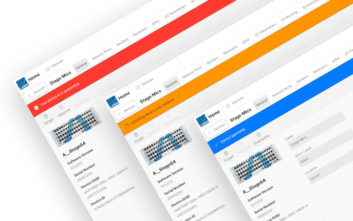 Anyone who has installed and upgraded IP infrastructures in the broadcast plant knows that racking up and cabling equipment is the easy part of the job. The more tedious and time-consuming aspect is usually the administrative tasks that follow: initial setup and registration, device management and security. Proprietary and piecemeal tools exist, but locating end-to-end solutions can be elusive.
Anyone who has installed and upgraded IP infrastructures in the broadcast plant knows that racking up and cabling equipment is the easy part of the job. The more tedious and time-consuming aspect is usually the administrative tasks that follow: initial setup and registration, device management and security. Proprietary and piecemeal tools exist, but locating end-to-end solutions can be elusive.
Lawo Home is a new cloud-based management platform for IP-based infrastructures. With it, according to the company, users can perform automatic plug-and-play discovery of IP audio and video devices. They are registered with their name, location, status and type. This applies not only to Lawo products but to third-party devices as well, using NMOS. Discovered devices are managed in a central inventory list, ready for access and configuration.
[Check Out More Products at Radio World’s Products Section]
Nothing changes but the changes in a media IP infrastructure, and the ability to save and recall multiple configurations is key to speeding up tasks. Home, according to Lawo, provides a centralized “mission control” for these processes, providing fast and unified access to device parameters for easy tweaking, irrespective of the end point being controlled.
The content flowing around the infrastructure is a media organization’s most valuable asset. Part of any IP administration solution’s job is security, not only for those assets, but also for the infrastructure. And doing this job seamlessly in the background is key.
Lawo claims that Home makes a variety of strategies available. First and foremost is quarantining unknown devices when they come online. Only after being approved via an intuitive IEEE802.1X-based routine, can they begin exchanging signals with the Home network.
A second approach is an authentication strategy based on a centralized user management system, with dedicated user roles and groups. The LDAP-based service allows users to authenticate either locally — within HOME — or via their own corporate IT infrastructure, e.g. Microsoft Active Directory, according to Lawo.
Finally comes the arbitration of devices and individual streams based on pinpointed rights management. Home’s architecture, says Lawo, is prepared to manage services such as transport layer security, network segmentation and other IT security mechanisms such as Radius.
Info: https://lawo.com/







